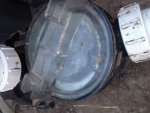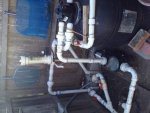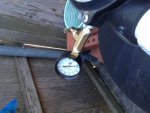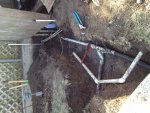I have 1hp single speed pump installed 2007 with new sand filter. Mechanical components are 8 years old. I want to move from 2 speed or variable speed pump.
My question to the group come is two parts.
1. Is it wiser to replace the entire pump assembly that ha full factory warrany or
2. Replace existing pump, impeller and related gaskets. Work performed by local pool shop when I deliver it to them.
Bonus Question: Variable speed motors are an option but I don't like digital things around a pool and I prefer it simple. My plan is to have dual speed pump with a waterproof toggle switch in line with my T104 mechanical timer. Pump will operate at low speed until I need to vacuum at which time, I flip a switch.
Recent events: I corrected a leak at main drain line (much digging) but still see air bubbles from one of two pool jets. My gut tells me that the air is coming from an above ground PVC connection so I re-glued all joints surfaces and replaced o rings at all unions (with lube). I suspect that bubbles may be related to 8 year old impeller.
My question to the group come is two parts.
1. Is it wiser to replace the entire pump assembly that ha full factory warrany or
2. Replace existing pump, impeller and related gaskets. Work performed by local pool shop when I deliver it to them.
Bonus Question: Variable speed motors are an option but I don't like digital things around a pool and I prefer it simple. My plan is to have dual speed pump with a waterproof toggle switch in line with my T104 mechanical timer. Pump will operate at low speed until I need to vacuum at which time, I flip a switch.
Recent events: I corrected a leak at main drain line (much digging) but still see air bubbles from one of two pool jets. My gut tells me that the air is coming from an above ground PVC connection so I re-glued all joints surfaces and replaced o rings at all unions (with lube). I suspect that bubbles may be related to 8 year old impeller.





